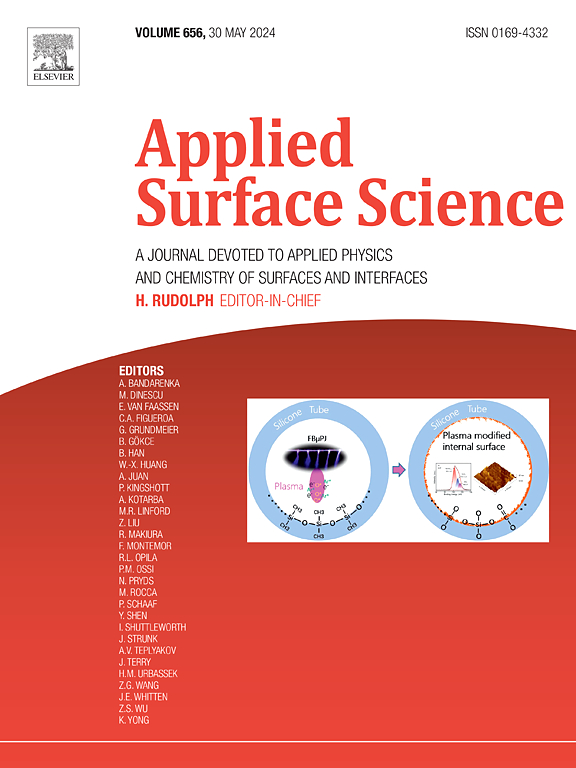丝胶稳定的生物金纳米粒子及其对成骨诱导和聚甲基丙烯酸甲酯表面改性的影响
IF 6.3
2区 材料科学
Q2 CHEMISTRY, PHYSICAL
引用次数: 0
摘要
生物金属纳米粒子最近引起了人们的兴趣。生物合成过程使用生物提取物作为纳米粒子形成过程中的还原剂和封盖剂,从而获得具有良好生物相容性的金属纳米粒子。金纳米粒子(AuNPs)是金属纳米粒子的一种,已被应用于各种生物医学领域。本研究以小鼠间充质干细胞(mMSCs)为模型细胞,证明了使用丝胶稳定的 AuNPs(AuNPs@SC)可增强成骨诱导。研究表明,浓度高达 100 µg/mL 的 AuNPs@SC 对间质干细胞无毒。此外,浓度为25微克/毫升的AuNPs@SC还能提高mMSCs的成骨分化生物标志物水平。在用 AuNPs@SC 处理 mMSCs 后的 3 天内,发现了骨生成素(OPN)和矿化的诱导作用。用 25 µg/mL AuNPs@SC 处理 mMSCs 24 小时后,检测到碱性磷酸酶(ALP)水平最高。当 AuNPs@SC 固定在聚甲基丙烯酸甲酯(PMMA)表面(AuNPs@SC/PMMA)时,表面粗糙度降低(Ra = -75.67 ± .01 nm),mMSCs 能够附着在 AuNPs@SC/PMMA 表面并生长。本文章由计算机程序翻译,如有差异,请以英文原文为准。

Biogenic gold nanoparticles stabilized with silk sericin and their impacts on osteogenic induction and surface modification of polymethyl methacrylate
Biogenic metal nanoparticles have been of interest recently. The process of biogenic synthesis used biological extracts as reducing and capping agents in nanoparticle formation resulting in obtaining metal nanoparticles with good biocompatibility. Gold nanoparticles (AuNPs) are type of metal nanoparticles that have been used in various biomedical applications. This study demonstrated the use of AuNPs stabilized with silk sericin (AuNPs@SC) to enhance osteogenic induction using mouse mesenchymal stem cells (mMSCs) as a model cell. It showed that AuNPs@SC at concentration up to 100 µg/mL were nontoxic to mMSCS. Furthermore, AuNPs@SC at a concentration of 25 µg/mL were able to enhance production of osteogenic differentiation biomarker levels in mMSCs. An induction of osteopontin (OPN) and mineralization was found within 3 days after treating mMSCs with AuNPs@SC. The highest alkaline phosphatase (ALP) levels was detected after treating mMSCs with 25 µg/mL AuNPs@SC for 24 h. When the surface of polymethyl methacrylate (PMMA) was immobilized by AuNPs@SC (AuNPs@SC/PMMA), the surface roughness decreased (Ra = -75.67 ± .01 nm) and mMSCs were able to attach and grow on the surface of AuNPs@SC/PMMA.
求助全文
通过发布文献求助,成功后即可免费获取论文全文。
去求助
来源期刊

Applied Surface Science
工程技术-材料科学:膜
CiteScore
12.50
自引率
7.50%
发文量
3393
审稿时长
67 days
期刊介绍:
Applied Surface Science covers topics contributing to a better understanding of surfaces, interfaces, nanostructures and their applications. The journal is concerned with scientific research on the atomic and molecular level of material properties determined with specific surface analytical techniques and/or computational methods, as well as the processing of such structures.
 求助内容:
求助内容: 应助结果提醒方式:
应助结果提醒方式:


